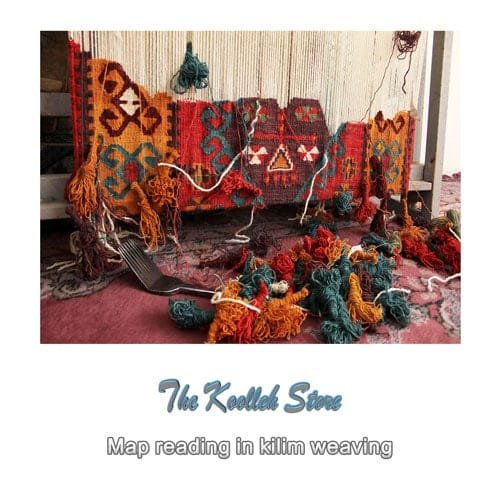Map reading in kilim weaving

Usually in plain kilim weaving, the map is not practical and the mind design of the weaver and based on the weaver’s feelings and emotions is geometrically engraved on the surface of the kilim. Is provided. In general, embossed kilim designs and patterns are divided into two completely different groups that are easy to clean and recognize.
Designs that are made from straight lines, broken designs.
Designs that consist of curved lines, revolving schemes.
The first group of designs consists of three straight lines. The horizontal line is a row of knots that are tied side by side, and the vertical line consists of a row of knots, one of which is tied on top of another on a pair of threads, and the oblique line consists of a row of knots that alternate high and. One is closed on the side and a 45 degree angle is formed. Curve designs or curve designs consist of curved lines, although straight lines are also used to separate the text from the margins.
Among the common designs and designs in embossed kilim, we can mention elastic designs, vases, flowers, false maps, packages, altars, as well as animal and human plant designs.
Kilim designs have lost some of their properties in order to find a way to match the specific texture of the kilim, and have taken on special characteristics of the kilim texture. Part of the motifs used in kilim weaving is the continuation of mythological motifs that have their roots in ancient times. The presence of a role called sunflower in Iranian kilims indicates that the sun is important to weavers because of the heat and the fact that light and heat give life to human beings, which leads to the blessing and fertility of the soil.
The cypress tree is one of the few natural phenomena that can be a symbol of eternal life due to its permanent endurance and greenness. As a symbol of life, the design of the strap has penetrated into more designs, including carpets and fabrics, and has been manifested in various ways in connection with the emotions and moods of the weaver. For example, back-to-back plants have a seal and facing plants have a sense of reconciliation. There are two ways to weave patterns in kilim:
1- The weaving method in this weaving technique uses the help of its creative mind and according to the surrounding environment, it cultivates the designs of animals, plants and means of life, etc. as a symbol in its mind and geometrically implements it on the texture. .
2- How to use checkered maps In this method, geometric or curved patterns are drawn on large checkered paper, dotted and colored. Each house, small and square, consists of a pair of strings or two strings (one string up and one string below), so the stringing is done according to the map. If the map in question consists of 100 square houses in width, 200 threads should be made, which due to the fact that the branches are facing down, we will have one in 100 pairs of holes, which is equal to the number of houses in the map. After weaving, according to the map, we proceed to the introductory texture, which is known as stepped or creased texture.

